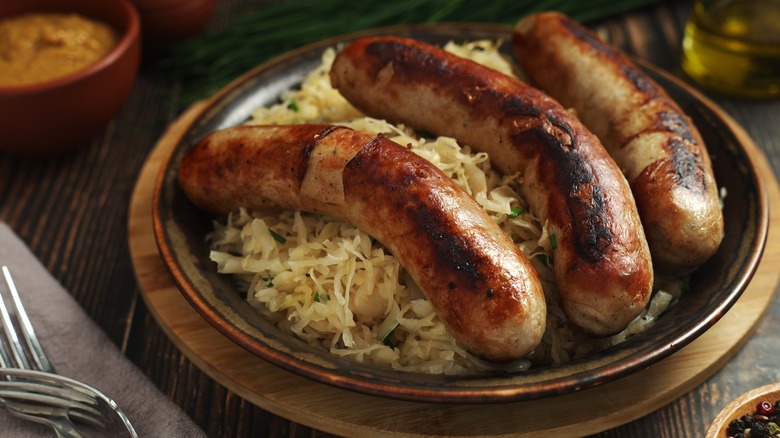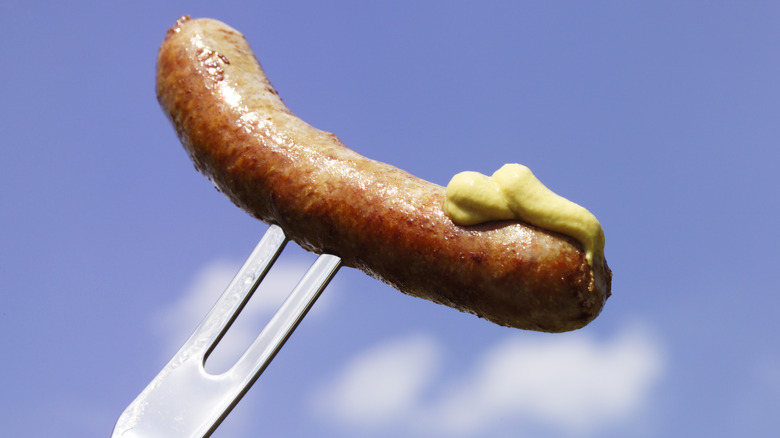The History Of Bratwurst And Where Its Name Comes From
2024's "Brat Summer" may come and go, but bratwurst summer is forever. In fact, not only are these smoky, savory, sweet sausages a barbecue classic, but they carry right on into fall with Oktoberfest celebrations and then winter as part of cozy, comforting meals. Perhaps it's no surprise that such a timeless dish has a history stretching back centuries, but it is indeed a fascinating history worth knowing the next time you bite into a brat.
The first written evidence of the bratwurst's existence is believed to come from Nuremberg in 1313, a city in Germany's Franconia region. Although, as with many things that have been around for hundreds of years, there's a bit of cloudiness and debate around the exact origins and who invented what first. The people in another German region, Thüringen, claim initial bratwurst ownership, and a 600-year-old list of ingredients for making the sausage in that area has been unearthed, which subsequently became the oldest German sausage recipe we have still around today.
We at least know the meaning of the term "bratwurst" for certain. "Brat" is the German word for "without waste," while "wurst" means "sausage." Bratwursts were truly developed as sausages to avoid waste: They utilize the various scraps of beef, veal, and pork, combining everything into sausage casing, which used to be made from intestines as yet another way to use meat leftovers. For generations, bratwursts helped Germans survive tough seasons by making the most of whatever food they could obtain.
From bratwurst then to bratwurst now
German immigration to America greatly increased in the nineteenth century. This is when the United States learned the wonders of light, crisp German lagers and big, bustling beer halls to enjoy them in. And few things go better with German lagers than another staple that German immigrants brought to America: bratwurst – for example, try the smoky German Rauchbier with a bratwurst and thank us later. Like the beer, the sausage took off with Americans and became a favorite here too.
Today, bratwurst is still a beloved hit, especially in regions where German immigration remained strong and flourished into long-lasting communities, like Wisconsin. But really, you can find these sausages just about everywhere — whether at German restaurants alongside sauerkraut, spätzle, and all kinds of German potato dishes or at simple American backyard barbecues.
Over the decades, bratwurst has really become more of an entire sausage category, with all kinds of different regional varieties. Just to name a few, there's the longer, thinner, veal-inclusive Kulmbacher bratwurst from the German city of Kulmbach, the Würzburger from Würzburg where the meat's mixed with white wine, and the Nürnberger rostbratwurst from Nuremberg, in which ground pork is combined with marjoram. Of course, any of these make for a mouthwatering sandwich or meal headliner, and the sausage's rich history is guaranteed to make you appreciate each bite a little more.

